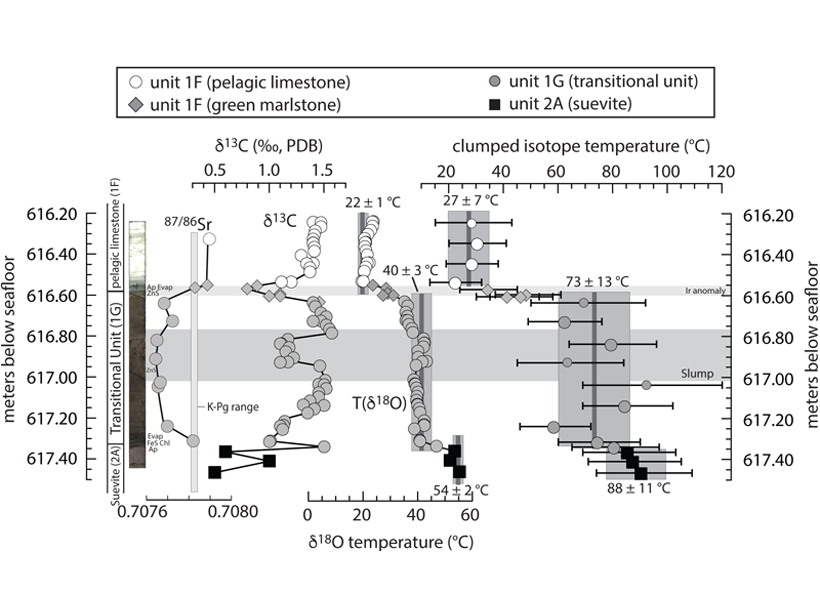Source: AGU Advances
The end of the Cretaceous and the demise of the dinosaurs is a fascinating time in Earth’s history that speaks to the imagination of many. Bralower et al. [2020], however, leave little to the imagination, detailing the environmental conditions at the ring of the Chicxulub crater during the years after the impact. Norris [2020] offers further perspective and context for this work in a Viewpoint in this issue.
The team reconstructs the environment by combining observations from sedimentology, geochemistry and paleobiology on the drill core just inside the crater. This unique combination of observations allows the authors to determine the details of environmental change just after impact through a period of rapid sedimentation during of tsunami-like wave activity. Eventually wave energy dissipated and was followed by the deposition of an iridium layer perhaps years later.
During this time there is ample evidence for hydrothermal activity and anomalous high seawater temperatures. Life reestablished quickly, with the recurrence of planktic foraminifera, fish and crustaceans several years after the impact. We end up with a unique and fascinating view into the Chicxulub crater in the intermediate aftermath of the impact, very cool!
Citation: Bralower, T., Cosmidis, J. Fantle, M., Lowery, C., Passey, B., Gulick, S., et al. [2020]. The habitat of the nascent Chicxulub crater. AGU Advances, 1, e2020AV000208. https://doi.org/10.1029/2020AV000208
—Vincent Salters, Editor, AGU Advances
Text © 2020. The authors. CC BY-NC-ND 3.0
Except where otherwise noted, images are subject to copyright. Any reuse without express permission from the copyright owner is prohibited.

